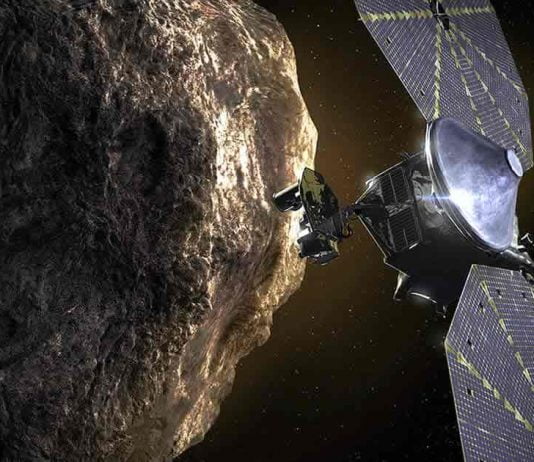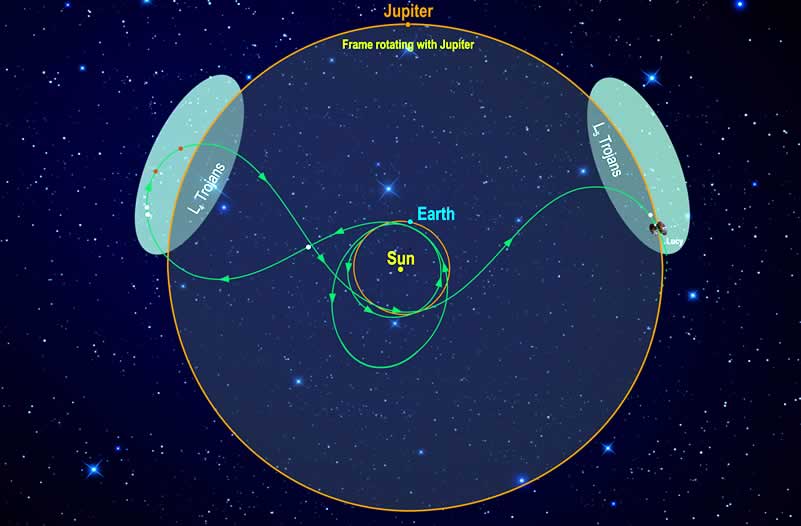For the first time, asteroids in the orbit of Jupiter are to be examined. With the NASA probe named Lucy, the Atlas V rocket has set off for the first time to Jupiter’s Trojan asteroids. This is also the first time that a mission to deep space will be powered only by solar energy.
Lucy launched on Saturday from the Cape Canaveral spaceport in the US state of Florida, as announced by NASA. The path of the Lucy probe will be long and dangerous. It will take 11 years and about 6 months, if all goes according to plan, to reach Jupiter to study the Trojan asteroids.
The main objective of the Lucy mission is to study the Trojan asteroids. But what are Trojan asteroids? This is the name given to the bodies that are located at Lagrange points 4 and 5 of Jupiter. These areas around the planets are very stable. In fact, the Lagrange points near the Earth are ideal places to send missions; because there they are kept with very little energy.
Asteroids, especially those far from the Sun, are still the remains of the construction of the solar system. These asteroids would be something like the bricks that were not used in the formation of our neighbourhood.
The Trojans that the Lucy mission will study are “the binary asteroid Patroclus/Menoetius, Eurybates, Orus, Leucus, Polymele, and the main-belt asteroid DonaldJohanson“, NASA notes.
In addition, Lucy is supposed to fly past an asteroid in the so-called main belt between the planetary orbits of Mars and Jupiter and also return three times to the vicinity of the Earth to get support for the flight through its gravity. The first asteroid flyby is scheduled for 2025, with the others scheduled for between 2027 and 2033.

